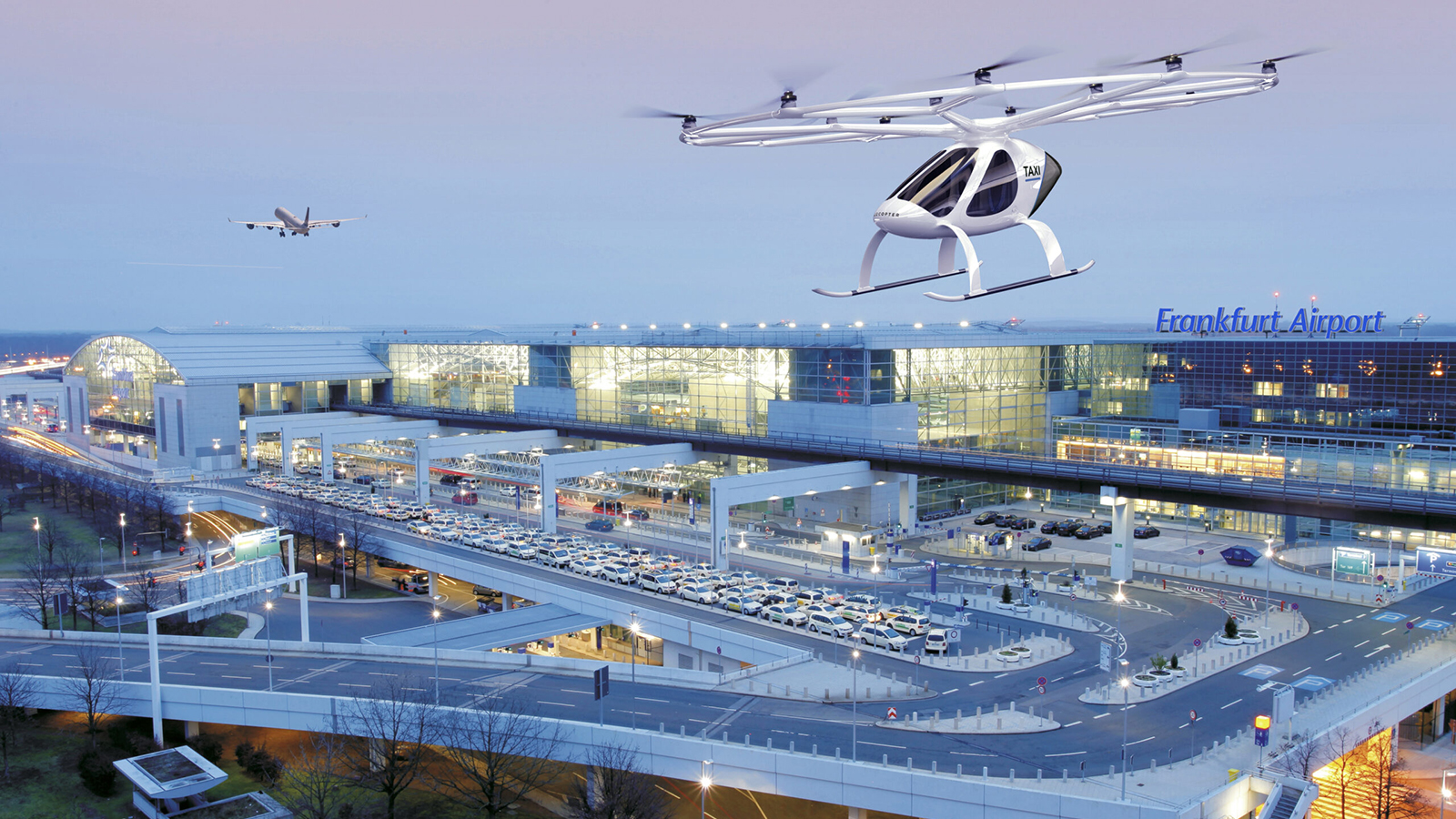Stay Up to Date
Submit your email address to receive the latest industry and Aerospace America news.
Advanced air mobility may be restricted to existing fixed-based operator facilities until it achieves fully autonomous service
Many developers of novel electric aircraft, especially passenger air taxis, have outlined a goal to fly right into or out of international airports, eliminating the so-called “last mile” hurdles for airline passengers. But such aspirations will be limited in the coming years by airspace restrictions and traffic controller capacity, experts working in the industry said.
As such aircraft begin ferrying passengers in the next few years, many will have to stick to existing helicopter flight paths and land at fixed-based operator (FBO) facilities, meaning a set of runways and helipads for small aircraft on the airport grounds, but at the outskirts, said Richard “Pat” Anderson, a pilot and a professor of aerospace engineering at Embry-Riddle Aeronautical University in Florida, in a phone interview.
Anderson also owns part of VerdeGo Aero, a Florida company that is developing hybrid-electric engines for undisclosed aircraft.
“If you look at a runway like Orlando International, there’s a box pattern of flight north and south for arriving airliners, so air taxis would probably come in from the east or west, underneath the airplane approach,” and to the FBOs, Anderson said. “Helicopters do that now. So I don’t think procedurally it’s a big deal for a limited number of flights.”
While such flights may be more convenient than driving crowded highways and using park-and-fly lots, there would still be hurdles to getting inside the secure area of the airport, he said.
“I’m usually dropping somebody off when I fly into an FBO at Orlando International — family members or friends who are going on a flight. And then the FBO either has a car that goes around to the commercial terminal, or they’ll give you a crew car to drive yourself around there,” Anderson said. “For the time being, that would be the case with air taxis until some other arrangements are made.”
And most FBO operations would require major infrastructure upgrades, including charging stations, before they could handle electric aircraft, he said.
But the biggest hurdle for AAM companies planning to fly into airports will be, at first, air traffic control personnel shortages, he said.
“Right now, we’re very challenged with respect to the number of ATC people available, and obviously we’re talking about trying to significantly increase the number of aircraft going in and out. So that’s going to tax the air traffic system,” Anderson said. “The only way that happens on a large scale is if we achieve fully autonomous aircraft.”
In the future, the most convenient service would be to have air taxis land not at an FBO but on a pad directly above or near Transportation Security Administration operations, he said.
“Maybe sometime in the future they do allow it to land closer (to TSA checkpoints), but that would make it really interesting because you would have to cross one of the flight paths, and that’s a lot more challenging from an airspace perspective,” he said.
The limitations outlined by Anderson are significant and may restrict the growth of air taxi services at large airports for many years to come, but regional airports may be better able to accommodate such traffic, Chris Fernando, an AAM consultant and adjunct faculty member at Florida Tech in Melbourne, told me.
“In the next three to five years, it’s going to be the VIP customer base that will use this technology, similar to the customer base for charter helicopter flights,” Fernando said. “I think the airspace will be able to handle passenger air taxis, but only if they are flying existing helicopter or regional aviation routes.”
Operators will also have to address additional security issues and the environmental impact of expanded flight volumes, he said.
“Because of these hurdles, I think we’ll see AAM companies expanding first into cargo operations, emergency response and health care mobility — moving doctors and nurses to rural communities for example,” Fernando said.
Get the latest news about advanced air mobility delivered to your inbox every two weeks.
About paul brinkmann
Paul covers advanced air mobility, space launches and more for our website and the quarterly magazine. Paul joined us in 2022 and is based near Kennedy Space Center in Florida. He previously covered aerospace for United Press International and the Orlando Sentinel.
Related Posts
Stay Up to Date
Submit your email address to receive the latest industry and Aerospace America news.




